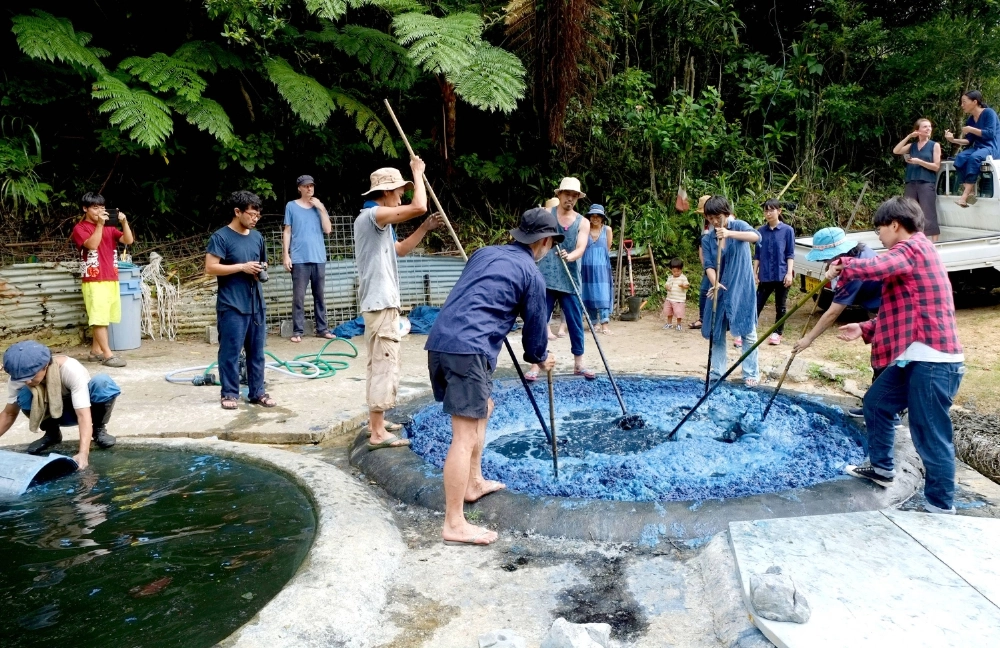I first encountered dorozome, a traditional mud-dyeing technique from the island of Amami Oshima in southern Kyushu, in 2022. The process involves dyeing cloth or fibers in red tannins extracted from techigi, a native flowering shrub, before working them with the island’s iron-rich mud to fix the color.
It was the first time I had ever heard of using mud as a mordant, and I was deeply impressed. What could be more natural or sustainable, I thought, than using bountiful local trees and the dirt under your feet to color textiles?
Turns out the reality is a bit more complicated, as I learned reading Charlotte Linton’s “Dyeing with the Earth: Textiles, Tradition, and Sustainability in Contemporary Japan,” which will be released Oct. 28 by Duke University Press. Linton, a postdoctoral research fellow in social anthropology at the University of Oxford, spent a year in Amami in 2017 working at natural dyeing workshop Kanai Kougei and researching how local craft processes intersect with the global economy and ideas of sustainability.

















With your current subscription plan you can comment on stories. However, before writing your first comment, please create a display name in the Profile section of your subscriber account page.